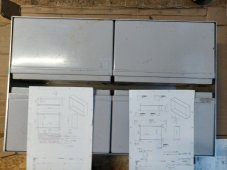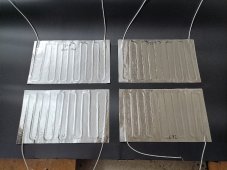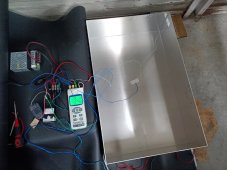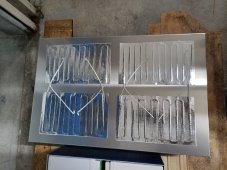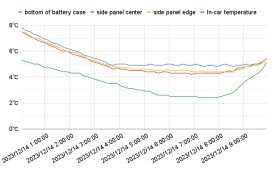BilTheGalacticHero
New Member
I'm setting up a LiFePO4 auxiliary battery for my Jeep to use when camping. I purchased a generic 100Ah Chinese battery off Amazon. This is a fully encased battery (plastic case). This is the battery...
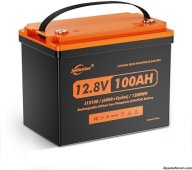
Since I often camp in below freezing temperatures I'm making a heater to warm the battery up enough to charge as needed. I have some small heating pads and a thermostat controller. My plan is to place the pads under the battery, They'll be attached to a thin aluminum plate. Unless of course there's a better place to put the heating pads.
These are the pads...
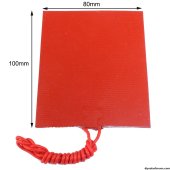
I was going to use two in series to cut down on the heat level.
The battery is located inside the Jeep but two winters in a row it's gone down into the teens and I've had to run the engine and heater on the Jeep for quite a while before the portable battery I was using would allow charging.
What I really need to know is where to put the temperature sensor for the thermostat? It has to go somewhere on the outside of the case but the locations I see recommended are all over the place (on the heat pad, which doesn't seem to make sense, on the positive terminal, etc.).
Thanks!

Since I often camp in below freezing temperatures I'm making a heater to warm the battery up enough to charge as needed. I have some small heating pads and a thermostat controller. My plan is to place the pads under the battery, They'll be attached to a thin aluminum plate. Unless of course there's a better place to put the heating pads.
These are the pads...

I was going to use two in series to cut down on the heat level.
The battery is located inside the Jeep but two winters in a row it's gone down into the teens and I've had to run the engine and heater on the Jeep for quite a while before the portable battery I was using would allow charging.
What I really need to know is where to put the temperature sensor for the thermostat? It has to go somewhere on the outside of the case but the locations I see recommended are all over the place (on the heat pad, which doesn't seem to make sense, on the positive terminal, etc.).
Thanks!
Last edited:




